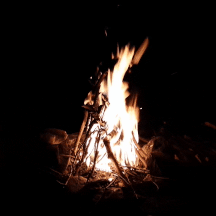<p >The Israeli Air Force launched a major attack on a residential area in the southern suburbs of the Lebanese capital Beirut using an unknown class of bunker buster weapon against an underground Hezbollah command centre. According to local news outlet Al Manar, four buildings were destroyed by the attack. Over 300 people are estimated to have been killed, with Hezbollah having yet to issue a statement. Early statements from Israeli officials indicated that the Commander of Hezbollah’s Southern Front, Ali Karaki, who survived an Israeli attempt to <a href="https://militarywatchmagazine.com/article/hezbollah-survived-israeli-assassination" target="_blank">assassinate him by air strike</a> on on the evening of September 23, was killed in the latest attack, as were several Members of the Iranian Revolutionary Guard Corps, who have maintained a presence as advisors. Conflicting reports subsequently emerged regarding whether or not Hezbollah Secretary General Hassan Nasrallah was present and may have been killed, with Saudi Arabian sources indicating that the attack did not kill him. Israel Defence Forces sources have assessed that Secretary Nasrallah was killed, with a source stating that his only chance of being saved from the attack was if he was not there – asserting that he had been present.&nbsp;Israeli sources previously claimed&nbsp;Ali Karaki had been killed on September 23, however, before this was confirmed to be false.&nbsp;</p><p ><img src="https://militarywatchmagazine.com/m/articles/2024/09/28/article_66f76c134244a9_27642450.png" title="Smoke Rises in the Aftermath of Israeli Bunker Buster Strike"></p><p >The construction of a&nbsp;<a href="https://thediplomat.com/2024/01/what-hezbollahs-fortifications-teach-us-about-north-korean-defenses/" >vast network</a>&nbsp;of fortified bunkers and tunnels spanning thousands of kilometres under Southern Lebanon in the 2000s by North Korean specialists is considered a major factor in Hezbollah’s ability to weather Israeli attacks,&nbsp;while Israeli experts have&nbsp;<a href="https://www.armyupress.army.mil/Portals/7/combat-studies-institute/csi-books/we-were-caught-unprepared.pdf" >described</a>&nbsp;the militia as “a defensive guerrilla force organised along North Korean lines.” Israel has <a href="https://militarywatchmagazine.com/article/bunker-buster-hamas-tunnels-israel" target="_blank">received growing supplies</a> of bunker buster weaponry from the United States since late 2023. While no conventional weapons in the Israeli arsenal are considered sufficiently powerful to penetrate Hezbollah’s best fortified positions in Southern Lebanon, the command centre in Beirut far from the centre of the militia’s operations may well be less deeply fortified. It is expected that Hezbollah will escalate retaliatory strikes on Israeli targets following the latest attack, with the militia having previously <a href="https://militarywatchmagazine.com/article/hezbollah-f16-facilities-israel" target="_blank">used only</a> limited drone and rocket artillery assets. Israeli sources have widely reported that the country is preparing an invasion of Lebanon, with efforts to take out Hezbollah’s leadership expected to facilitate an easier assault.&nbsp;</p>
